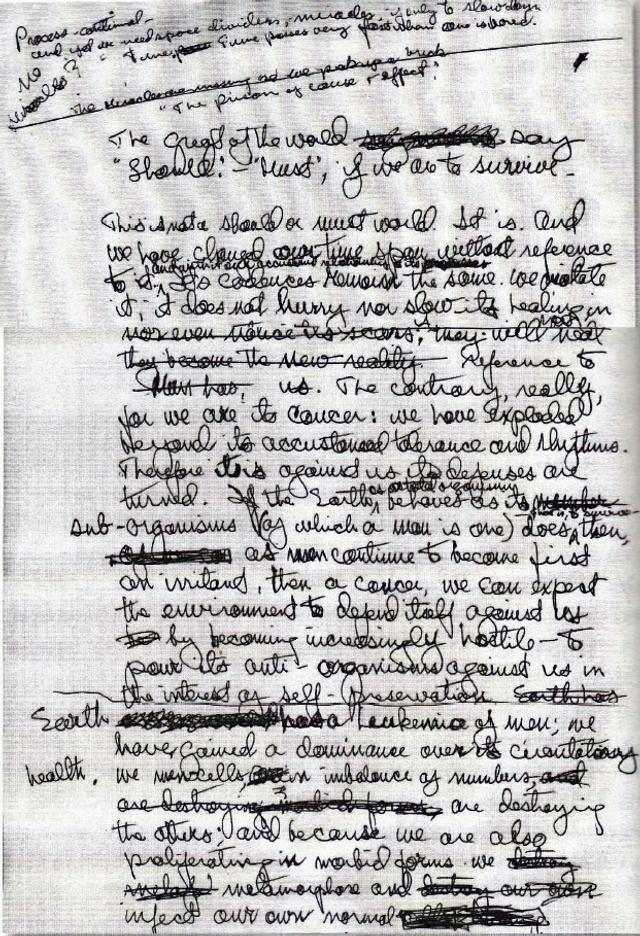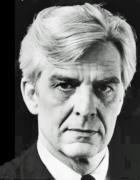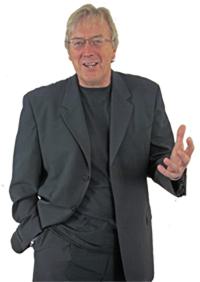All you need to be a complete fundraiser
- Written by
- Steve Harrison
- Added
- June 03, 2013
Book review

Changing the world is the only fit work for a grown man by Steve Harrison
Reviewed for SOFII by Ken Burnett.
Steve Harrison may have stumbled onto something with his intriguing book about that quirky, game-changing adman, Howard Luck Gossage. It’s not merely a tale of the life, times, fortunes and foibles of the man they called ‘the Socrates of San Francisco’, or analysis of his singular take on the mammon of the Mad Men era, the amoral advertising industry of the 1950s and 60s that he was a significant part of, and where it was going wrong. Harrison, like any good biographer, reveals all that. But he’s found something more. He’s realised that HLG, as he was affectionately known, was an instinctive, natural and complete fundraiser.
Of course the book’s title also applies to women. Like all men and women of good will the fundraiser is driven to change the world, to right wrongs, to make things better. What sets the fundraiser apart is that he, or she, sees that through effective campaigning and fundraising to recruit and convert other people to the cause she can multiply her good intentions a hundredfold, or ten thousandfold, or a millionfold simply by awakening and nurturingen masse the passions that spur people to action. So by raising the donors and their money that fuels good works, she’s able to make a massive real difference.
Making a real difference. That’s what fundraising is all about.
 View original image
View original image
Advertising mostly offers empty promises, creates empty needs and satisfies nothing. According to Vance Packard in The Hidden Persuaders, their psychographic segmenters, psycholinguists, subliminal communicators, operant conditioners, psychometric specialists and message compression technologists all were just deviously tinkering with the tastes and appetites of a voracious consumer society. Wealth and influence however didn’t translate into affection and respect. In the 1960s an ad exec was the equivalent of today’s estate agent or, perhaps, an apprentice investment banker. Yet HLG immediately spotted advertising’s potential to change the world for the better.
Advertisers were already silently and surreptitiously manipulating and moulding the public’s morals, so why not do it for a good cause? Thus we see that first and foremost Howard Luck Gossage was a fundraiser, arguably one of the first to explicitly harness the power of advertising to promote social change causes. If you too would be a fundraiser I suggest you rush online to buy yourself a copy of this very important book.
Gossage rejected the avarice and loose morals of Madison Avenue and set up his business in the advertising backwater that was San Francisco. There, via his chosen method of communication, the written word, he set about gaining the influence he would need to change the world. His agency never employed more than 13 people yet he started interactive advertising, cause related marketing and ran PR campaigns that were decades ahead of his time.
 View original image
View original image
HLG was the first person to use the term ‘interactive’. His big idea was dialogue and feedback, conversation with rather than talking at, campaigns that involve people and are shaped by their feedback rather than campaigns planned in advance and set in stone prior to launch. He felt advertising should be a conversation between equals, not ‘We talk, you listen’. In effect he was advocating an end to influencing without involving, though it would be decades before this dream was realised and Howard Luck Gossage himself only survived to see the slenderest beginnings of it.
But those slender beginnings achieved a lot. Gossage effectively reinvented press advertising, created a revolutionary approach to combining press and PR, sowed the seeds of the environmental movement, saved national treasures including the Grand Canyon and went on to influence most of his peers and successive generations of ad people and communicators the world over. He did this by systematically breaking all the rules. And all the response records too.
Changing the world is the only fit work for a grown man is an engaging, entertaining account of a man who wrote quirky, at times downright incomprehensible ads for major corporate clients and somehow got them to pay for them. And they often generated massive responses too. Like when HLG asked readers to write in with suggestions as to why there’s no ‘u’ in Qantas. Seven thousand five hundred people did.
Here are a few quotes from the book:
‘Advertising is a multi-million dollar sledgehammer driving a 49 cent economy size thumbtack.’
‘In baiting a trap with cheese, be sure to leave room for the mouse.’
‘If something’s worth doing, it’s worth over-doing.’
HLG’s office was described as, ‘a non-descript office filled with descript people.’ He also treasured the freedom to resign an account when the creative process became too painful. A legendary encounter with his major client went as follows.
HLG ‘I’ve got to resign your account. I can’t stand your advertising.’
Client ‘But you do our advertising.’
HLG ‘I know, that’s why I’m quitting the account.’
Early in the book Harrison describes Gossage as ‘the most unemployable person I know’. At first this seems an unlikely quality and you’ll have to read the book to find out why it’s anything but. As I read it I came to think that any serious student of fundraising should get this book, because it simply overflows with ideas and inspiration as well as some perhaps unintentional insights into what it really means to be a fundraiser of the Howard Luck Gossage variety.
So, what do you need to be a HLG kind of fundraiser? Technical competence and proficiency, of course. But more, qualities such as flair, warmth, imagination, gift of the gab, passion, conviction and an unquenchable, unrestrained desire to change the world. And perhaps another, harder to define attribute, what you might describe as being such a determined, persistent pain in the arse as to be next to unemployable.
Wouldn’t it be great if fundraising employers started to actively seek attributes like these?
Published by AdWorld Press, UK, 2012, paperback, 188 pages.
© Ken Burnett 2012
About Howard Luck Gossage
 Howard Luck Gossage, 1917-69, the Mad Man with scruples who changed advertising for good.
Howard Luck Gossage, 1917-69, the Mad Man with scruples who changed advertising for good.
About Ken Burnett
 Ken Burnett is author ofRelationship Fundraising and other books including The Tiny Essentials of an Effective Volunteer Board (The White Lion Press Limited, London, UK) and The Zen of Fundraising, (Jossey-Bass Inc, San Francisco, USA).
Ken Burnett is author ofRelationship Fundraising and other books including The Tiny Essentials of an Effective Volunteer Board (The White Lion Press Limited, London, UK) and The Zen of Fundraising, (Jossey-Bass Inc, San Francisco, USA).
Ken is also SOFII’s managing trustee.

















